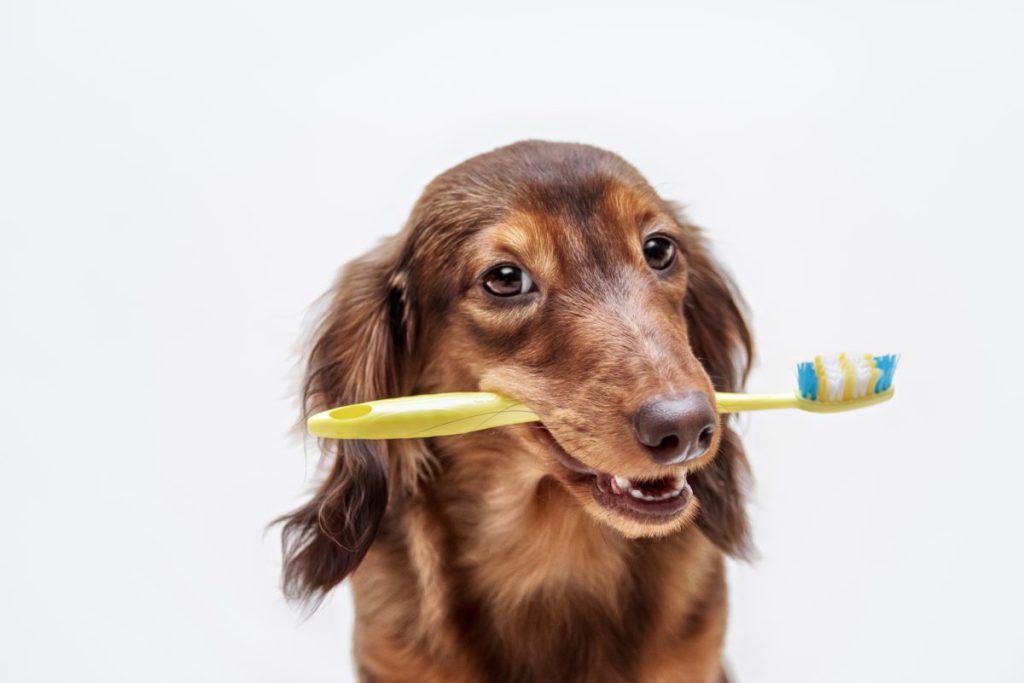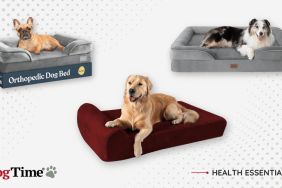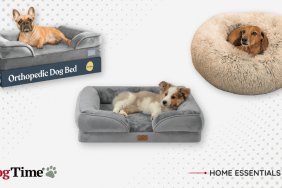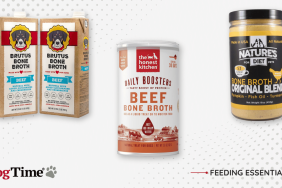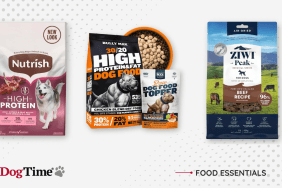Tartar and gingivitis are two of the most common problems in dogs that veterinarians see. Poor dental hygiene can lead to gum disease and periodontal disease. These conditions can cause loss of teeth and — if untreated — more serious conditions such as bacterial infections of the heart, liver, or kidneys. Dental care for your dog is crucial to prevent this progression. Make sure to practice proper at-home care and have your dogs’ teeth checked out by a professional on a regular basis. Here are some dental care tips to keep your dog’s teeth in tip-top shape.
1. Daily brushing
Brushing your dog’s teeth helps to remove plaque and slow the development of tartar. When first beginning to brush, be gradual and make it a pleasant experience. Start with a finger brush and gently touch your dog’s teeth.
When they get a little more comfortable with you touching their mouth, move your finger in soft, circular motions over the front of their teeth and gums. You can eventually add pet toothpaste when they relax. Do not use human toothpaste.
Be sure to reward your pet after tooth brushing with play or a nice walk!
As your dog gets used to this, you can start to use a doggy toothbrush as your veterinarian recommends. Some dog breeds, especially smaller or toy breeds, need more brushing than others.
Making it a daily activity will help your dog stay calm through the process, and it will keep them in good oral health.
2. Proper diet and chews
What your dog eats affects their smile. Talk to your veterinarian about formulating a diet that will keep your dog’s teeth in good shape.
Do not share your sugary human foods with your dog. They’re not good for you, but they can be especially bad for canines. Table scraps might not just affect your dog’s oral health, but their overall health will suffer as well.
Chewing is great for dogs’ dental health, but you need to be careful with what you allow your dog to chew on. Certain bones can be dangerous for your pet, and not just for their teeth.
Rawhide bones, for instance, can scrape and tear internal organs and can easily become a choking hazard. They are often doused with chemicals that can make your dog sick, too. They should not be used for teeth-cleaning purposes.
Cooked bones can also splinter and cause internal damage. Stick to bones that your vet recommends, and replace them when they get small enough for your dog to swallow. Keep bones in the fridge when your dog isn’t chewing them to prevent bacteria buildup. Always supervise chewing, too.
Some dog parents also use treats that are formulated to improve dental health.
Rope toys or other toys that your dog uses to play tug-of-war can also help keep their teeth in good shape while giving them a good workout. Make sure any toys you buy are sturdy enough for your pooch, and put them away when you’re finished playing.
3. Doggy dentist visits
Talk to your vet about annual or semiannual teeth cleanings. A teeth cleaning performed by your vet is the only way to remove tartar buildup.
Just like you would schedule a cleaning for your own teeth, be sure to put your pet’s cleaning in your calendar as well. You can also find low-cost dental cleaning services on the internet.
You may want to consider non-anesthesia dental cleanings if your dog is sensitive to anesthesia or if you want to avoid side effects. Some vets suggest that this type of cleaning will not be as effective at providing the deep cleanse that your dog’s mouth needs. You’ll have to discuss this with your own vet and find out what’s right for you and your dog.
Whatever type of cleaning you decide on, keep up with professional cleanings. Remember, your dog could be in pain and you may not even know it. A professional will be able to spot whatever is going wrong that you might miss.

